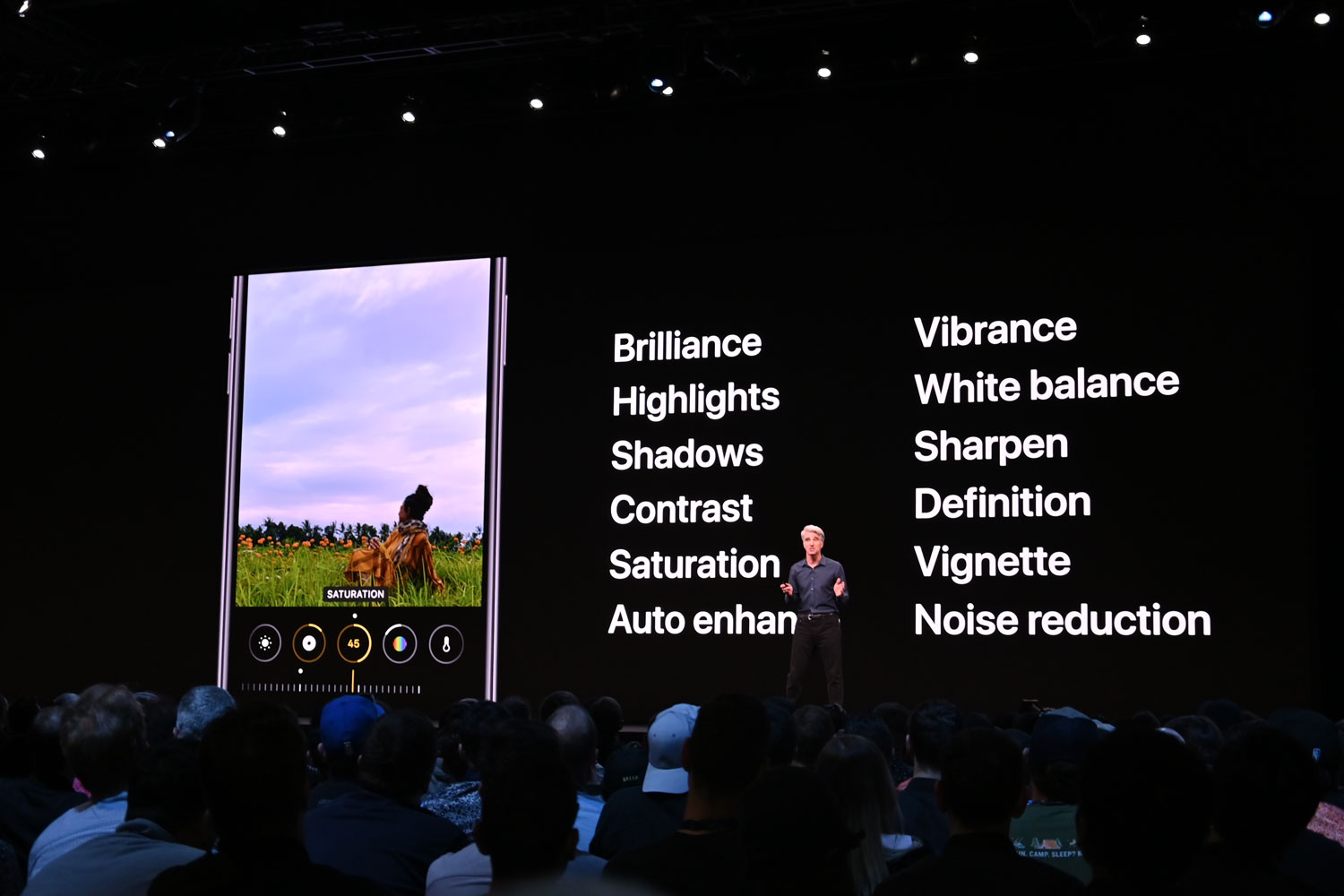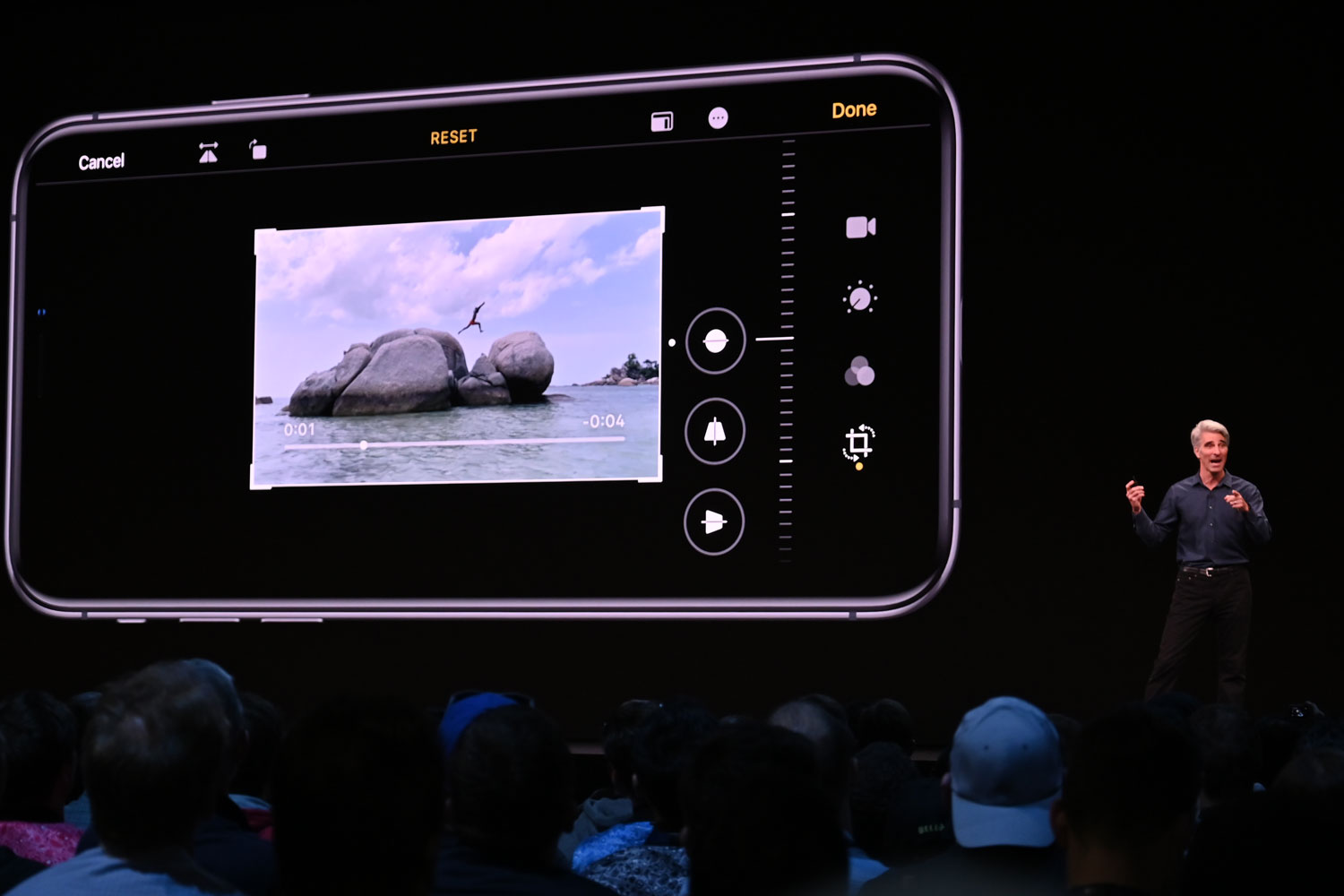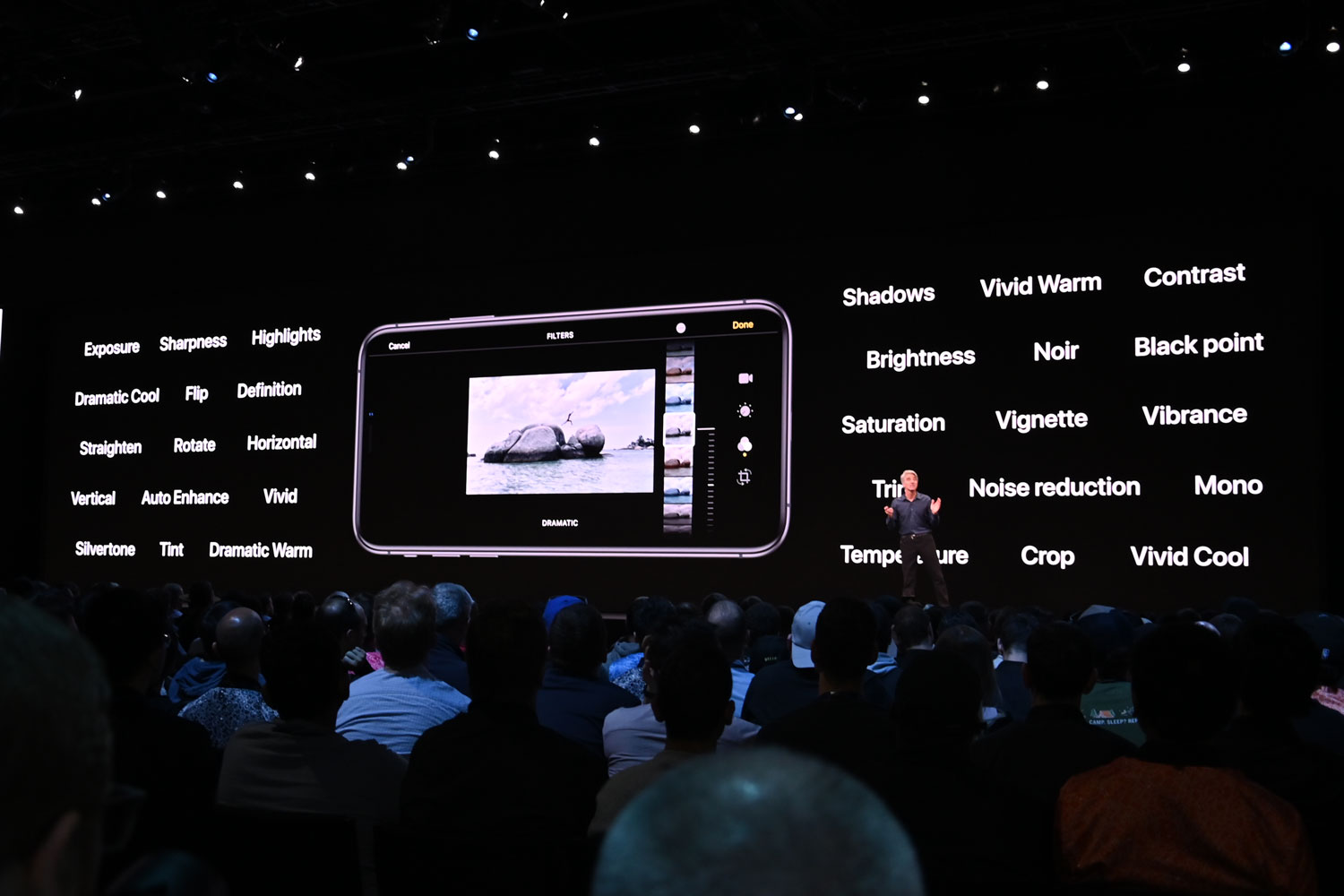Apple took the wraps off of its latest version of iOS at its annual Worldwide Developers Conference on June 3 (read our full coverage). The new iOS 13 will bring sweeping changes to how photographs and videos are organized in the native Photos app, with a focus on cutting through the clutter. The editing interface has also been completely redesigned, and editing controls will now work for videos as well. The Portrait Lighting effect has also seen minor enhancements.
Anyone who uses their iPhone’s camera for more than just taking pretty pictures — from capturing receipts to digitizing documents — knows how quickly your photo library can fill up with junk. Apple is introducing a solution to this problem in iOS 13, which uses machine learning to intelligently hide this clutter, as well as duplicate images, leaving a streamlined view of just the photos you want to see most.
You’ll see the effect of this in the new Photos tab. In addition to cutting out the clutter, photos and videos are now arranged in a more creative grid that allows for thumbnails to be displayed at different sizes. This emphasizes your best photos by displaying them at full-width. Videos will also be easier to see thanks to autoplaying thumbnails in grid view.
While iOS 12 had somewhat powerful photo-editing features built-in, the presentation of those features left much to be desired. The new iOS rearranges the controls to put them even closer to your fingertips, with things like exposure, contrast, saturation, and white balance shown simultaneously at the bottom of the screen.
Those same adjustments are coming to video. The built-in video-editing capabilities of iOS were previously limited to trimming the length of the video, but in iOS 13, you will be finally be able to adjust exposure, color, sharpness, and much more, just like they can with a photo. You’ll also be able to straighten crooked video and, importantly, rotate a video if, say, a horizontal video is improperly displaying in vertical orientation.
Apple also showed off a new feature for its Portrait Lighting mode, which uses depth mapping to add simulated studio lighting effects. In iOS 13, you can now change the distance of the virtual light, which will realistically effect how it falls on your subject’s face. The effect was subtle when demonstrated on stage, but we prefer that to it being over the top.
The new iOS 13 is currently in developer preview. A public beta will arrive later this month, with the full release coming in fall 2019.








